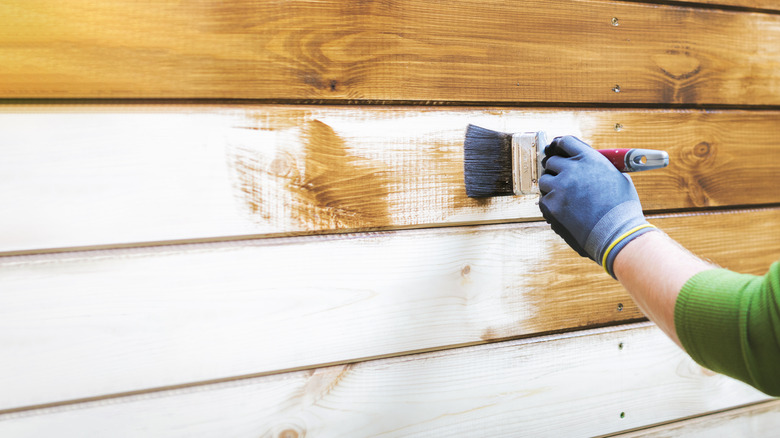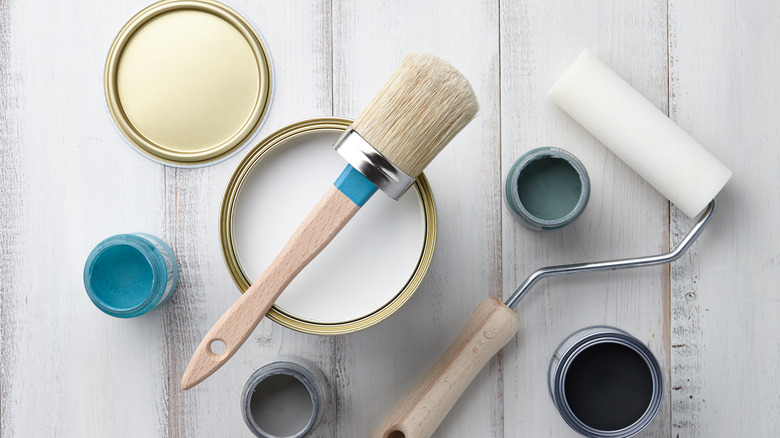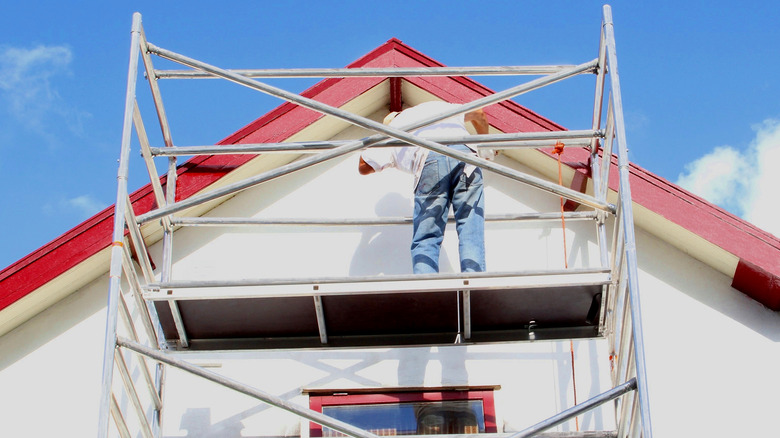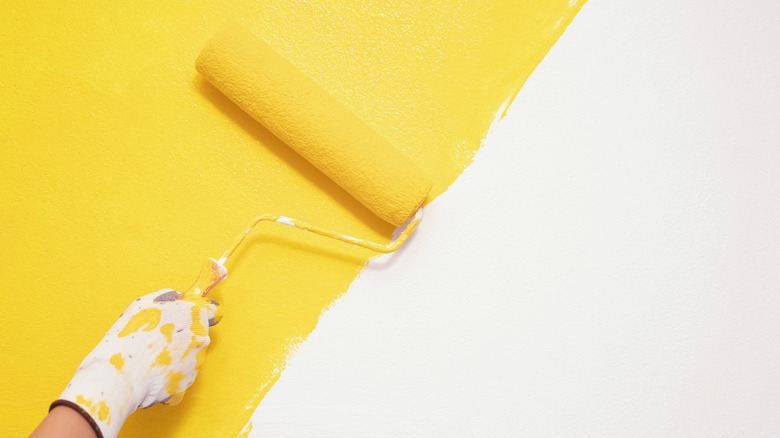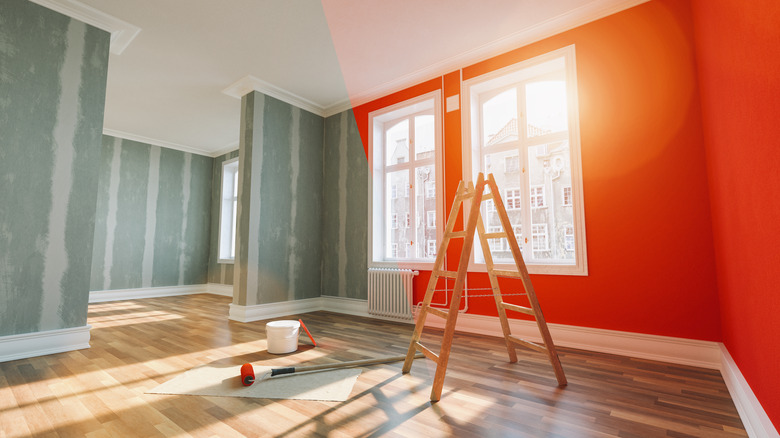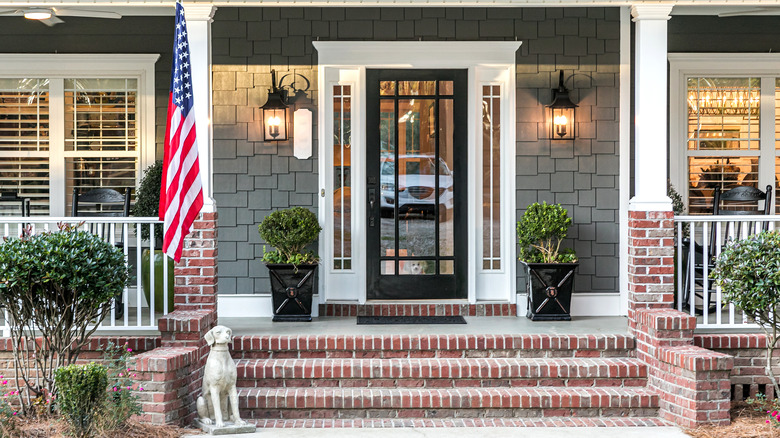How Much Does It Cost To Paint An Entire House?
Want to add curb appeal to your home? Or maybe the paint is starting to chip or fade? Whatever the reason, not only will a new coat of paint boost your home's appearance, but it will also enhance its value, including its protection and renewal. So, how much does it cost to paint an entire house? The average price may change from year to year based on inflation and location, so it's vital to determine a plan for your exterior coverage. With the fluctuation of prices, there are several things to consider regarding the entire cost. According to HomeServe, the latest average expense to paint a house is $3,500 to $7,000. Depending on the size of your home, whether a two-story ranch or other, it costs $1 to $4 per square foot or more. Other cost factors might include condition, siding material, permits, preparation, and labor.
A quick start to receiving a more specific budget plan for your home painting project is to check a cost estimator. This will give you a better scope of your overall options. Another major decision to make is if this will be a DIY project or done by hired professionals. Generally, it's cheaper to do it yourself, with the largest expenses typically being the paint and labor. Therefore, keep your budget and schedule in mind throughout the process. Read on to learn how much it will cost to paint your entire house.
Factors for costs
The cost to paint your entire home will vary significantly, depending upon these factors:
Size of your home
The height and square footage of your homestead will put an initial overall price in place. A multi-story house will inevitably cost 25% to 50% more than a single-story home. With an average cost of $2.50 to $5.50 per square foot, a two-story house might have a price tag between $3,500 to $17,500 or more, per A New Leaf Painting.
Paint and supplies
One of the priciest items on the shopping list to paint your house is the paint itself. Depending on the quality and type you choose, the average gallon might cost $20, and higher-end brands $30 to $50 and up per Complete Custom Paint. A second coat will need to be applied for an optimum look as well. Don't forget the primer! If you are changing colors or painting on bare wood, you'll want to add primer first, which is often less expensive. You might look for paint and primer in one. Also, consider your tools with brushes, rollers, ladders, tape, etc. What about a paint sprayer? Although spraying paint might seem like a quick job, using brushes and rollers is more efficient when painting a house. These classic tools give your house a thicker, more accurate application overall. Paint sprayers are good for painting or staining kitchen cabinets and fences. According to Forbes Home, you can buy or rent a paint sprayer for between $40 and $100 or purchase one for a few hundred dollars if needed.
Location and climate
House painting prices may vary with where you reside depending on how much elemental damage your exterior receives or cost of living, so consider your geographic location and climate. South or southwestern-facing walls may be more affected by sun exposure or if you live in a place with a high potential for humidity, hurricanes, and other storms, per Home Guide. Also, determine how the house walls and siding have been taken care of in the past (or from previous owners). Exterior paint may last up to twenty years or more, or as little as three. On average, your house should be painted every five to ten years.
Labor: DIY or hire the pros
Are you going to paint the house yourself or let someone else do it? It's important to factor in the cost of hiring professional painters if desired. According to Bob Vila, some companies may charge $25 to $75 per hour or by the square footage of the residence ($.50 to $3.50); this is based on 2021 stats. If you want to save money, doing it yourself is the way, but if you want less stress, or are physically unable to do it, then hiring professional house painters is the answer.
Additional costs
When working on a project, no matter how major or minor, there are always unexpected costs that come up. Here are a few to keep in mind:
Prep work and repair
Be prepared to put in some time for prep work along with any unforeseen repairs. Clean it up! Prepare your area to be painted by pressure washing as well as wiping down prospective cobwebs, dirt, and mold. Depending on the condition of your surface area, common repairs might include siding that needs to be replaced, caulking and sealing door and window edges, or other damages that need to be fixed. You might also discover chipped or peeling paint that should be scraped and sanded.
Type of exteriors
Prices will also vary depending on the type of material(s) that your home is constructed on. For example, metal or aluminum siding, brick, concrete, stucco/plaster, or vinyl. Bob Vila also notes that costs for these exterior resources may range from a few hundred dollars to a few thousand, with brick being the most expensive at approximately $10,500. Because it is permeable, brick needs additional paint for the best coverage and most likely needs a primer.
Permits and inspections
If you have a multi-level home, extension ladders and a scaffolding permit may be a contribution to your overall expense. The average cost for scaffolding may range from $100 to $300, depending on where you live. Generally, the height requirement is 4 feet above a lower level. For construction work, it's 6 feet, per Ace Scaffolding Contractors. Additionally, if your home was built prior to 1978, a lead paint inspection may be necessary. This kind of inspection ranges from $200 to $400 (at-home tests are $40 or less). Lead paint has been known to cause a multitude of deadly health problems in humans when ingested or inhaled and should be examined honestly.
Types of paint and services
There are several decisions to make when painting an entire house, like choosing the right paint and primer or if any additional services will be required. Here are a few to explore:
Different types of paint
Choosing the right kind of exterior paint is crucial, but which one is best? This might depend on what will make your house look its best. Gloss and semi-gloss are perfect options for areas that get a lot of use, like doors and windows, as they are easy to clean and mildly scratch-resistant but may show imperfections. Satin paint is also easy to clean and great for brick, including wood or cement siding. According to Lowe's, flat (or matte) has the least amount of sheen yet is the perfect choice for hiding scratches and dents, including applying touch-ups. Between oil-based (alkyd) and water-based (latex), both offer different benefits. Oil-based paint is a good match for doors, as it dries smoothly and fights strongly against the elements. Latex dries faster than oil-based, and you won't need to reapply often with how it adapts well to warm and cool temperatures.
Professional painting services
Depending on what type of materials and siding your home has, you'll want to find the right company that can perform the required services for prepping and painting your home. For example, you might have an old metal door that needs the right contractor to refurbish. According to All Around Moving, other professional painting services might include wood staining, paint stripping, power washing, wallpaper removal (for interior), or any other materials that need to be removed. Try getting at least three estimates before making ultimate decisions.
Why you need to paint the interior
Painting the exterior of your house is an immense task alone. Here's why you might consider painting the interior as well:
Cost to paint the interior
The cost to paint the interior of your house should be inevitably less than the exterior. According to Home Guide, painters might charge $1 to $3 per square foot or an average of $350 to $850 each. Depending on how many rooms need to be painted and the square footage of your home, an average range might exist between $1,500 to $6,000. Labor costs may make up 70% to 85% of the total contract. With the DIY approach, the overall price is considerably less, with a range from $100 to $300, including paint and supplies.
Increases the value
Adding new paint in and out of your home communicates the care and maintenance you put into the home to potential buyers. According to Flying Colors Painting Co., painting interior surfaces shows the attention that was taken in protecting and correcting the walls from wear, tear, and potential moisture issues.
Update your style
Painting the interior reboots your style and life. Whether it's for your own benefit or in preparation to put the home out on the market, painting the interior will both refresh and modernize its look and feel throughout. Again, choose neutral colors like beige, gold, and tan while avoiding white, which can be too plain, per OpenDoor. You might also see things that you couldn't before, like dents and marks, especially if little ones are often around.
Benefits of painting your entire house
If you're still contemplating painting your entire house, here are a few reasons why it's beneficial:
Make it stand out
First impressions are a must! According to CertaPro Painters, when done properly, a superior paint job is vital in giving your home curb appeal, especially if it's been years since the last application. Additionally, make sure the color you choose balances out with the other neighboring houses to avoid clashing. Neutral colors like brown, gray, tan, and white are safe selections. From there, you might add complementary pops of color on doors, trims, or other special features.
Increased value
Keeping up the appearance of your property is very important, particularly if you plan on selling it sometime in the future. Lacquering on a fresh color while making sure surface areas are well-maintained contributes to your home's resale value. This will assure a striking impression when officially presented. Also, painting both the outside and inside of your home may produce approximately $4,000 or more gain, per Crash of Rhinos Painting. This provides a move-in-ready feel to the buyer along with a positive return-on-investment (ROI) for you, the seller.
Damage protection
Painting your house doesn't just give it a new look, it also offers protection for the structure, including all who live in it. Your home gets hit by various types of weather and moisture (rain or snow) throughout the years. By painting the exterior, the paint helps guard the wood or other material from mold and mildew developing. It also defends against insects (termites) and dust, per SurePro Painting Experts. Overall, this may assist in the discovery and prevention of certain annoyances in the future.
